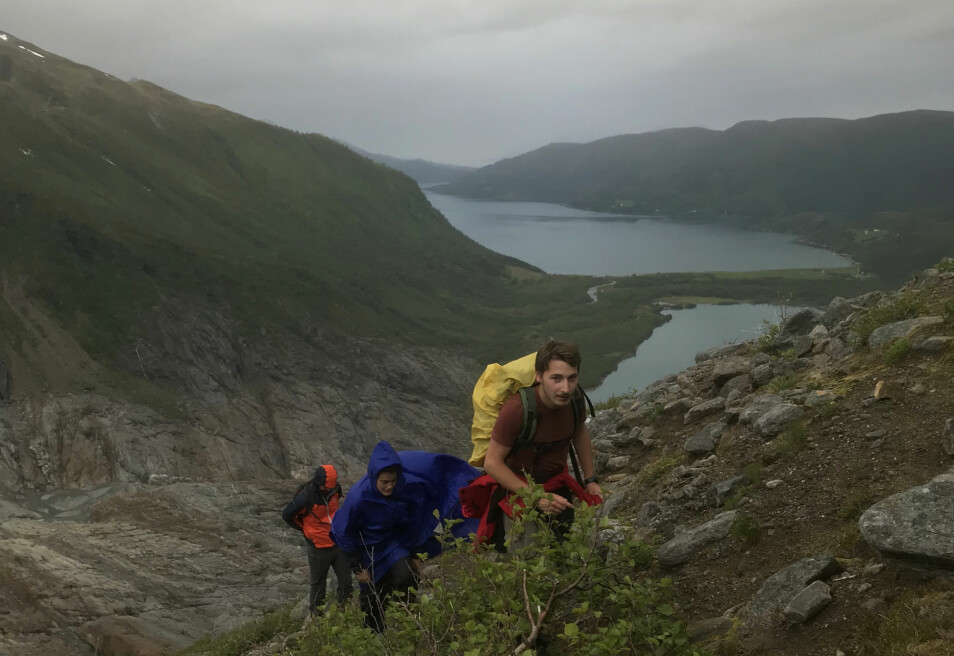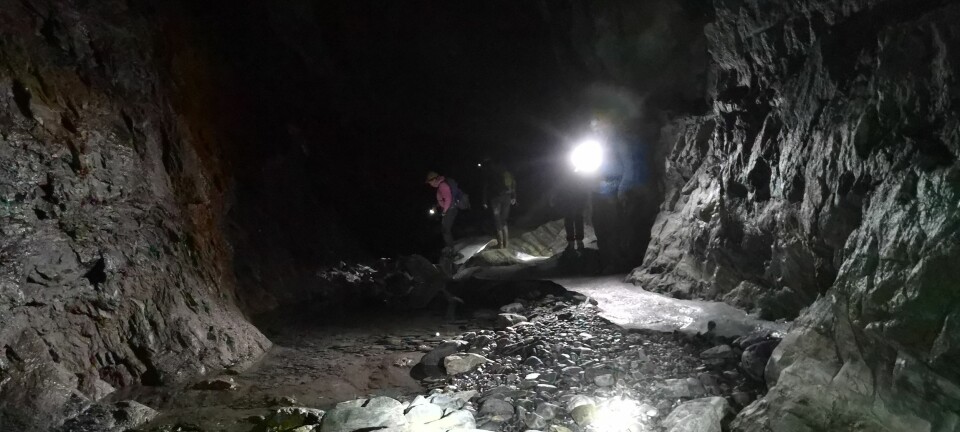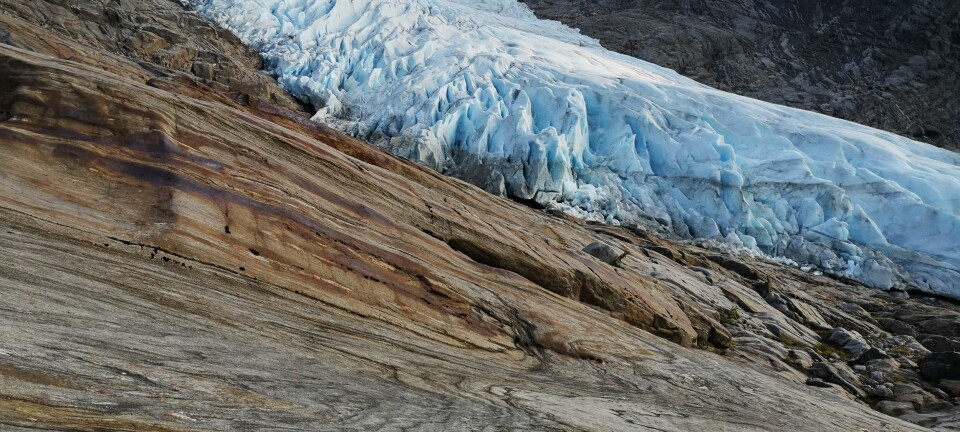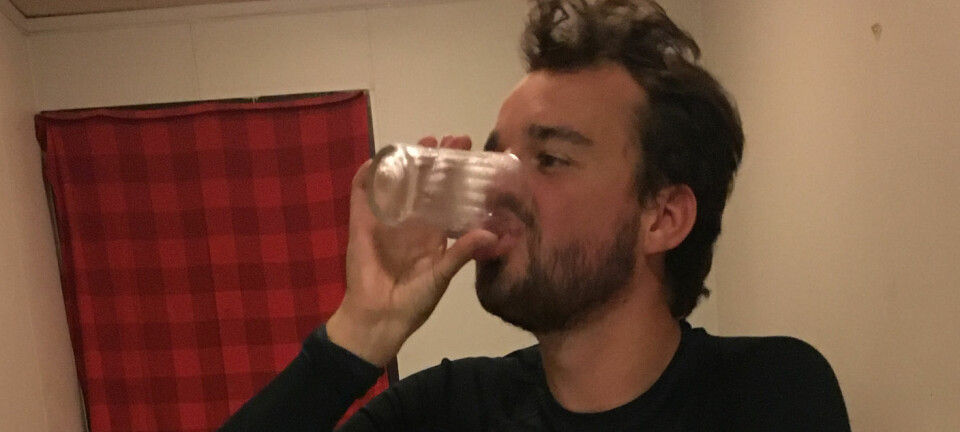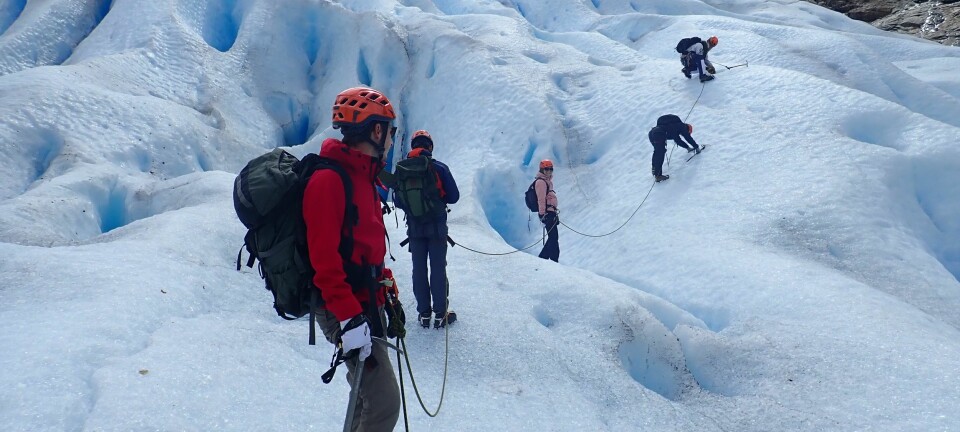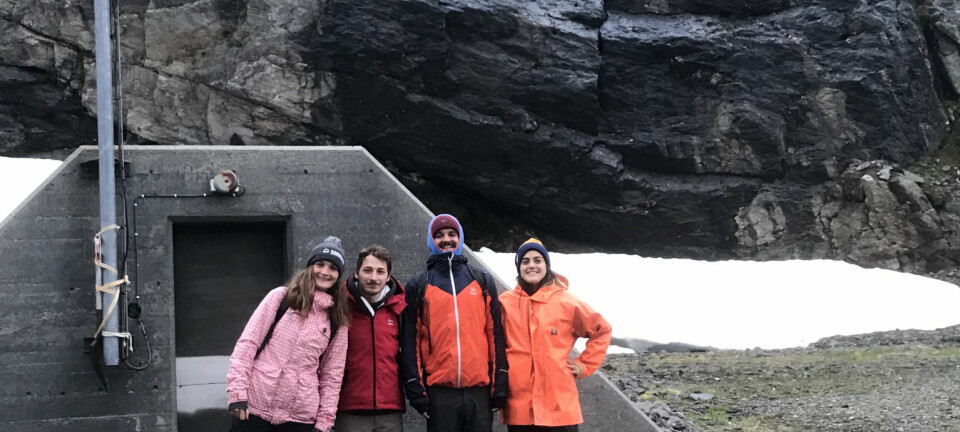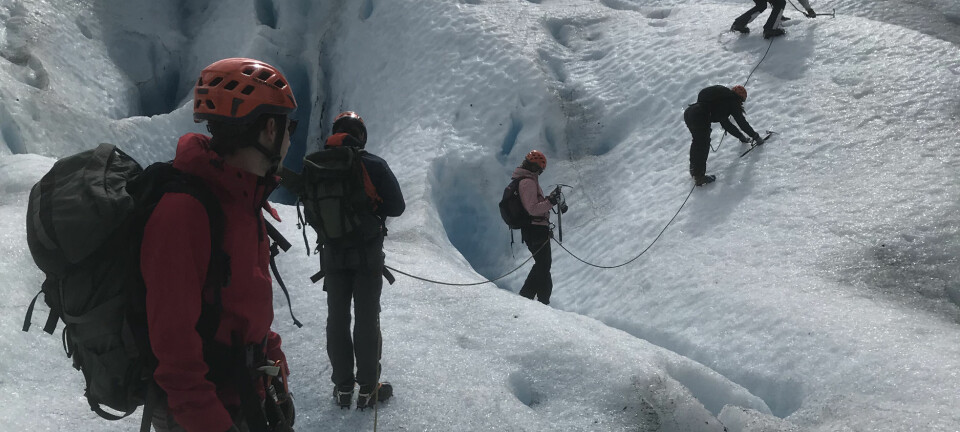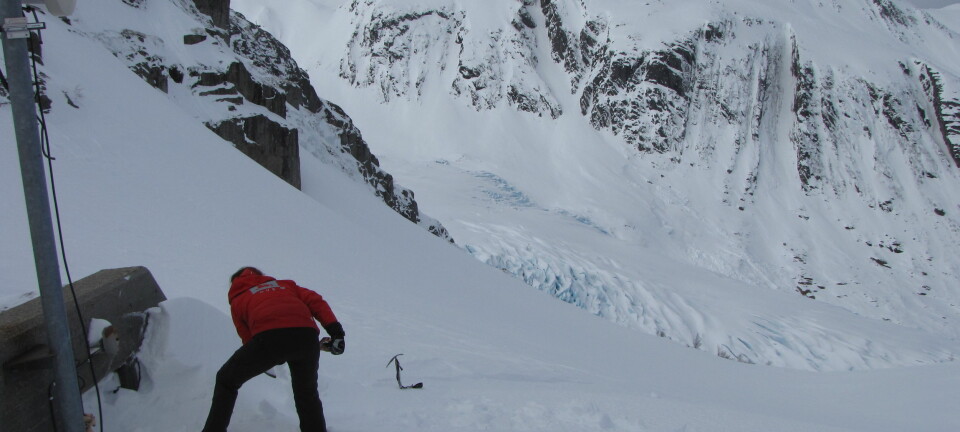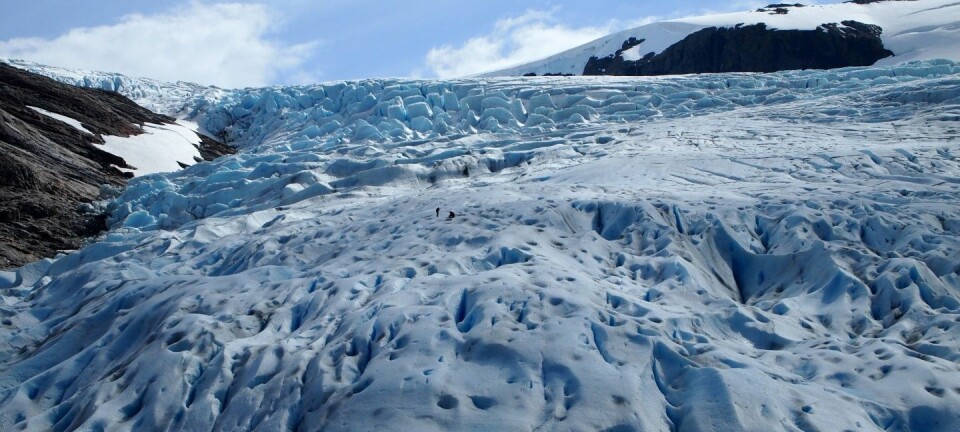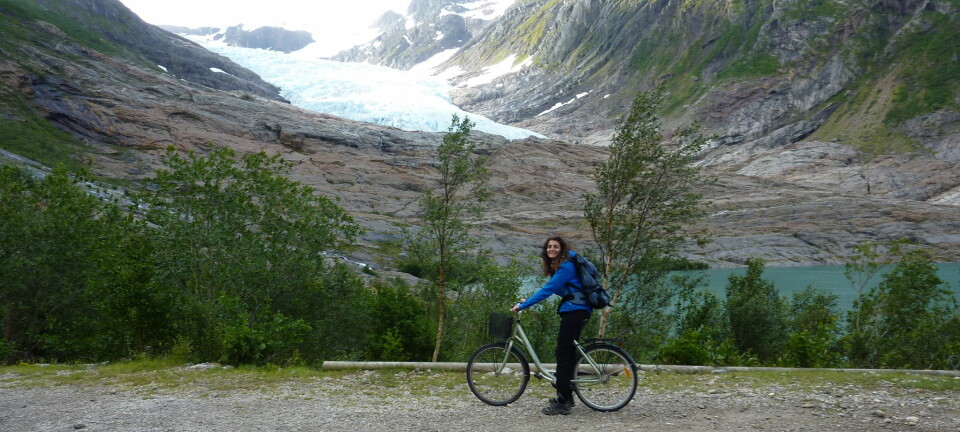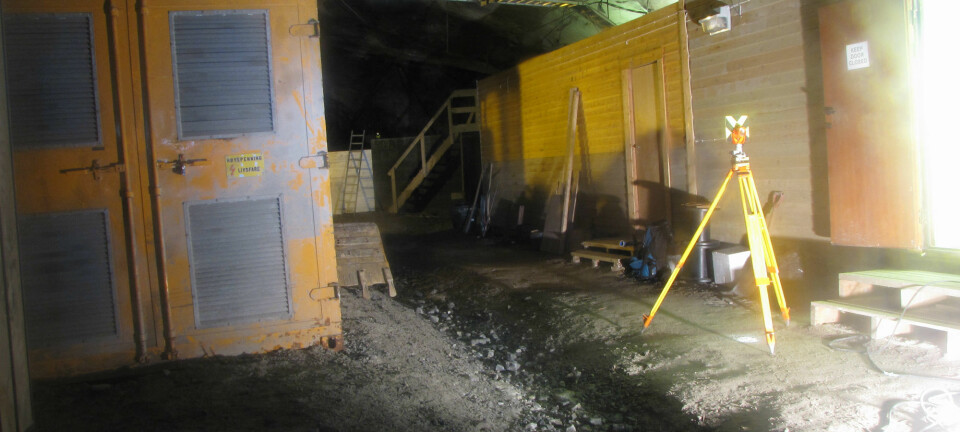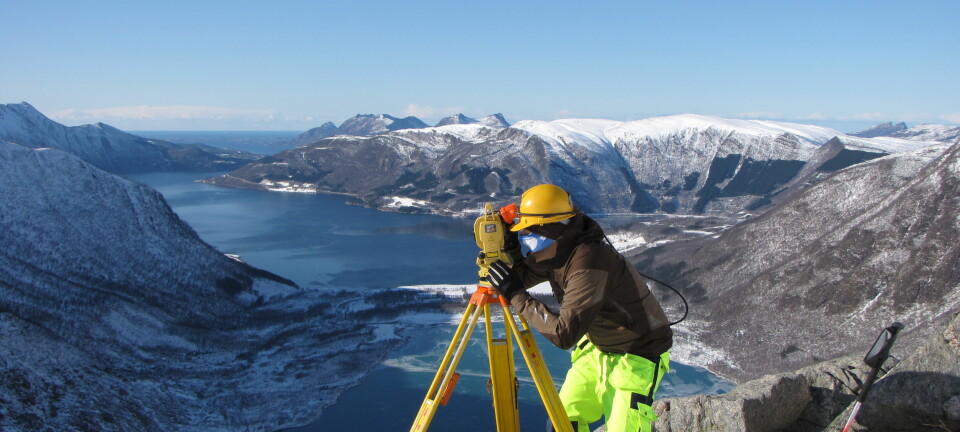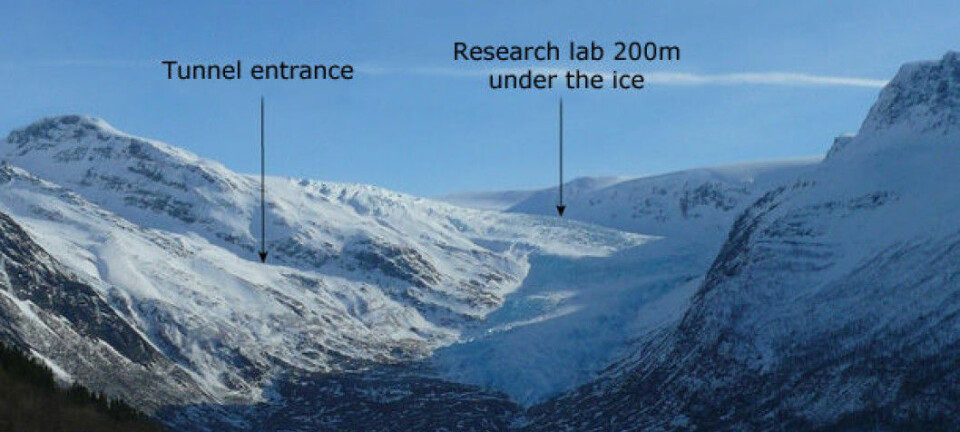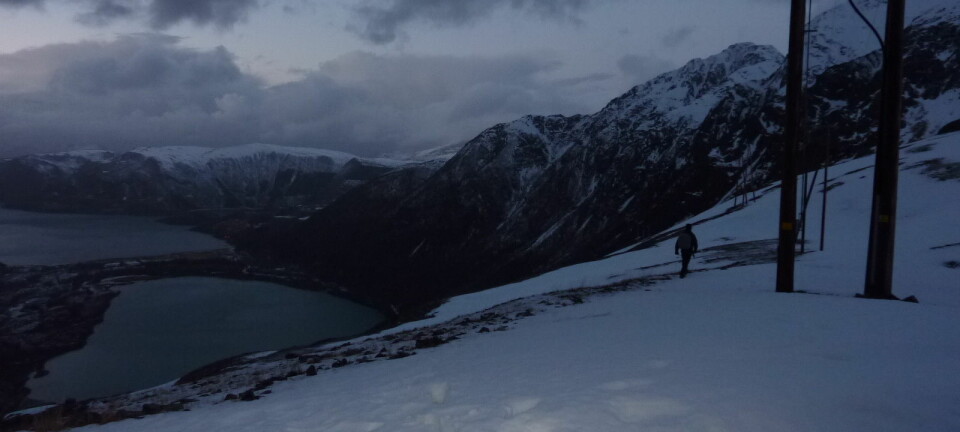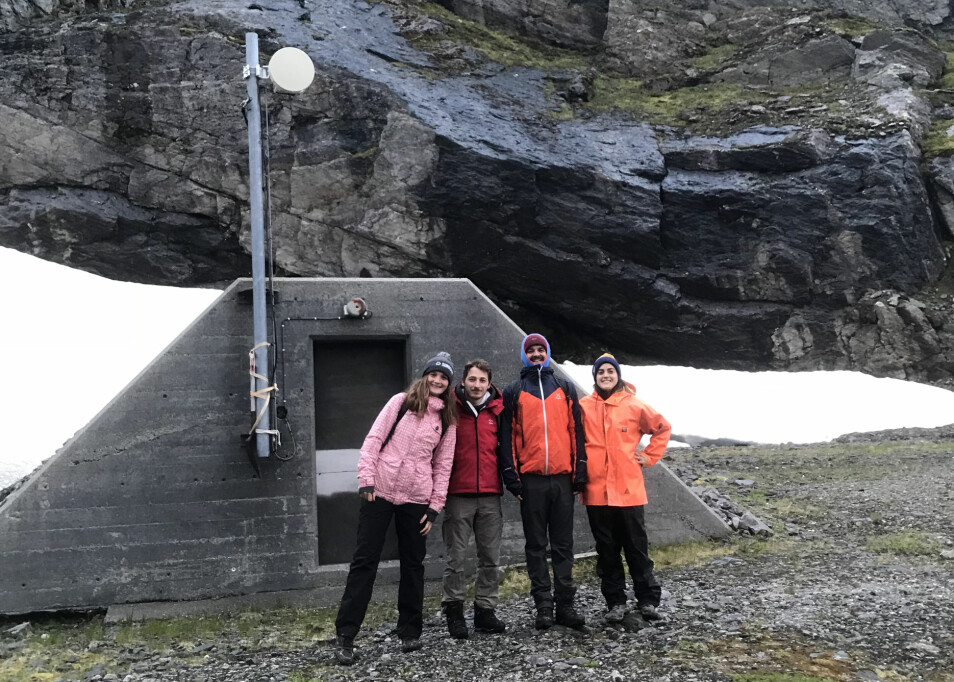
The journey to Engabreen and arriving at the tunnel on the Sunday evening
June 24 to 26, four french intern students (Margaux Blanckaert, Chloe Melen, Clement Ottavi Le Callonec and Valentin Amauger) at the Norwegian Water and Energy Directorate (NVE) guided by Miriam Jackson, visited the Engabreen, a glacier in northern Norway part of the Svartisen ice cap, and discovered the Svartisen subglacial laboratory under the glacier.
24.06.2018:
We made our journey to the glacier mostly by car and boat. With the other students, I had been in the Bodø area for few days before the trip to the glacier just to visit this part of the country that none of us knew. Thus, we had planned with Miriam that we meet her at Saltstraumen on Sunday the 24th in the afternoon to make our way to the glacier together.

After crossing the mountains and the sea on the wonderful Norwegian road and a short stop at the grocery to buy some food to survive the journey later, we finally catch sight of majestic Engabreen on the other side of the fjord. Just a few minutes after getting off the boat, we arrive at our base camp. We are going to stay the next days in a lovely little cabin at the bottom of the glacier with all the features we need. From the living room, the view of the forest, the lake and the glacier is absolutely breathtaking. The landscape is amazing, the glacier seems to make its way between the mountains to then dive into the lake.
First, we eat a little so that we have enough energy to climb the mountain beside Engabreen to reach the laboratory under it. We walk about one hour and a half until we see the entrance of the tunnel hidden at the bottom of a huge rock cliff. The climb is not as easy as we thought it would be because of the steep track and the rain that makes the path slippery. We make a quick tour of the tunnel. However, we do not take too much time to visit it because we will be back in the tunnel under the glacier for a longer tour on the next day. Thus, we went in the laboratory in the tunnel to start up the download of the seismic data to get it back on the next day because it take several hours. These data are very important for NVE because they allow us to study the glacier from underneath – a unique set of data! It is an indescribable feeling to be in this tunnel dug into the rock under 200 metres of ice with all the equipment necessary to study the glacier as near as possible and to see the living facilities so that scientists can spend several days at a time living in the tunnel..
Lastly, we go back to the cabin in the night under the midnight sun. Such a strange experience for us to walk under the sun in the middle of the night. We arrive back at our cabin, tired by the walk, at around 1 AM to sleep a bit before going onto the glacier the next morning.
